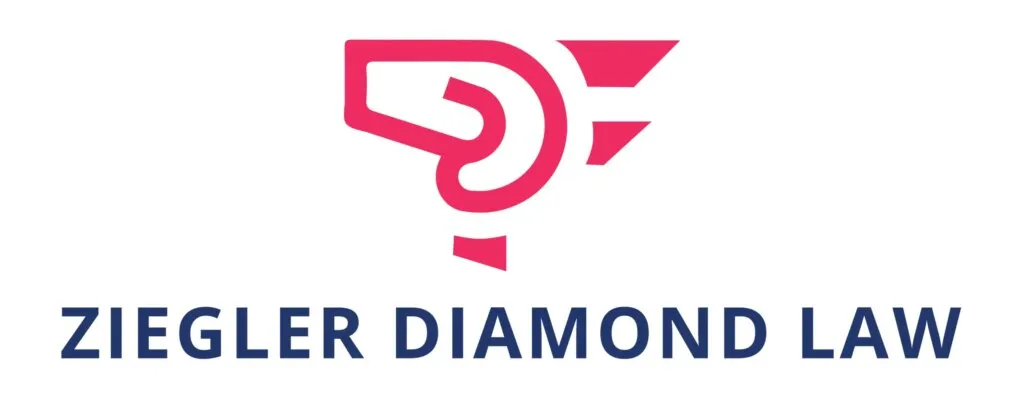Dispute and Conquer: Fixing Errors on Your Credit Report
Fix credit report errors can seem daunting, but it’s an essential step toward financial stability, especially if you find yourself facing unexpected challenges like Stressed Sarah. Credit report errors aren’t just bothersome—they can significantly impact your life by dragging down your credit score, leading to higher interest rates, loan rejections, and more financial anxiety.
To address this, here are a few key steps to fix credit report errors:
- Get Your Free Report: Obtain your credit report from Equifax, Experian, and TransUnion.
- Identify Errors: Carefully review each section for inaccuracies.
- Dispute Mistakes: Send a dispute letter to the credit bureau, including evidence of the error.
- Follow Up: After 30 days, check to ensure the error is resolved.
Credit report errors are more common than you might think. According to the FTC, 21% of credit reports contain errors, with some seriously affecting scores. Understanding and correcting these mistakes is not just about numbers. It’s about ensuring that your financial profile accurately represents you.
The impact of fixing these errors goes beyond a number; it’s about reclaiming control over your financial life. Accept the power of accuracy to make informed decisions and reduce stress. For more detailed guidance, trust experts like Ziegler Diamond Law to help steer this process successfully.

Understanding Credit Report Errors
Credit report errors are more common than you might expect. The Federal Trade Commission (FTC) reports that 21% of credit reports have errors. These mistakes can affect your credit score, making it harder to borrow money or get good interest rates.
Let’s break down the types of errors you might find:
Common Errors
- Inaccurate Personal Information
Mistakes like a wrong address, misspelled name, or incorrect Social Security number can slip into your credit report. These errors might seem minor, but they can lead to bigger problems, like identity confusion. - Incorrect Account Information
Sometimes, the status of your accounts might be wrong. You might see accounts listed as open when they’re closed or vice versa. Incorrect balances or payment history can also appear, affecting your credit score. - Identity-Related Errors
Identity theft is a significant issue. If someone uses your information fraudulently, it can lead to accounts you didn’t open showing up on your report. This is why monitoring your credit report regularly is crucial.
Why Do These Errors Happen?
- Data Management Mistakes: Sometimes, errors reappear even after being corrected. This can happen if data is not managed properly by the credit reporting agencies.
- Incomplete Information from Creditors: Creditors might provide incomplete or incorrect information, leading to errors on your report.

By understanding these errors, you can take action to fix them. It’s about more than just numbers. It’s about ensuring your financial history is accurate and reflects the real you.
In the next section, we’ll explore the steps you can take to dispute these errors and reclaim control over your financial profile.
Steps to Fix Credit Report Errors
Fixing credit report errors might seem daunting, but breaking it down into manageable steps makes it easier. Here’s how you can start the dispute process and ensure your credit report is accurate.
Contacting Credit Bureaus
First, get in touch with the three major credit bureaus: Equifax, Experian, and TransUnion. They are responsible for maintaining your credit report and must investigate any errors you report.
- Get Your Credit Report
Begin by obtaining your credit report from each bureau. You can request a free annual report at AnnualCreditReport.com. Review these reports carefully to spot any inaccuracies. - Gather Supporting Documents
Collect any evidence that supports your claim. This could be bank statements, payment records, or even police reports if identity theft is involved. - Dispute the Errors
Write a dispute letter or use the online dispute process each bureau offers. Clearly explain the error and attach your supporting documents. - Send Your Dispute
It’s best to send your dispute via certified mail to ensure it is received. Keep a copy for your records. The Federal Trade Commission (FTC) requires credit bureaus to investigate disputes within 30 days.
Contacting Information Furnishers
Sometimes, the error might originate from the information furnisher, such as banks or credit card companies. Here’s how to address that:
- Identify the Source
Check your credit report to see which company reported the incorrect information. This could be a bank, credit card company, or another creditor. - Reach Out Directly
You can contact these companies directly to dispute incorrect information. Provide the same supporting documents you sent to the credit bureaus. - Request Corrections
Ask the company to correct the information they sent to the credit bureaus. They are obligated to investigate and update the records if they find an error. - Follow Up
After contacting both the credit bureaus and the furnishers, recheck your credit report to ensure the errors have been corrected. If they persist, you may need to dispute the errors again.
By addressing the errors with both the credit bureaus and the information furnishers, you can tackle the problem from all angles. This comprehensive approach increases the chances of a successful resolution.
In the next section, we’ll dig into the specifics of how to dispute these errors, including writing an effective dispute letter and using online tools.
How to Dispute Credit Report Errors
When you spot an error on your credit report, it’s crucial to act quickly. Here’s how to tackle the dispute process effectively, whether through a dispute letter or online.
Writing a Dispute Letter
A well-crafted dispute letter is a powerful tool in fixing credit report errors. Here’s how to write one:
- Contact Information
Start by including your full name, address, and contact details at the top of the letter. Also, list the credit bureau’s name and address you’re writing to—Equifax, Experian, or TransUnion. - Explanation of Error
Clearly explain the error you found. Be specific about what the error is, where it appears on your credit report, and why it’s wrong. For example, “Account number XXXX-XXXX-XXXX-1234 is inaccurately listed as delinquent.” - Supporting Documents
Attach copies of documents that prove your case, such as bank statements or payment receipts. Highlight relevant information to make it easy for the bureau to see your point. - Certified Mail
Send your dispute letter via certified mail with a return receipt requested. This ensures the bureau receives it and provides a record for your files.

Online Dispute Process
If you’re tech-savvy, you might prefer disputing errors online. Here’s how to do it with each bureau:
- Equifax Online
Visit the Equifax website and log in to your account. Steer to the dispute center and follow the prompts to submit your dispute. You’ll need to upload any supporting documents electronically. - Experian Online
Experian also offers an online dispute option. Access your report, identify the error, and use their online form to explain the issue and attach documents. - TransUnion Online
Similarly, TransUnion allows you to dispute errors online. Use their tools to pinpoint the inaccuracies and provide evidence.
While online disputes are convenient, be aware that some online forms might include arbitration clauses, potentially affecting your rights in future disputes.
Choosing the Right Method
Decide whether a dispute letter or online process suits you best. A letter provides a tangible record, while online disputes can be faster. Either way, clarity and evidence are key.
In the next section, we’ll address common questions about fixing credit report errors, like how to get something removed from your report and what a 623 dispute letter entails.
Frequently Asked Questions about Fixing Credit Report Errors
How do I correct errors on my credit report?
Correcting errors on your credit report involves contacting the credit bureau that issued the report with the mistake. You’ll also need to reach out to the business that supplied the incorrect information. Start by checking your credit reports from all three major bureaus—Equifax, Experian, and TransUnion. Look for any discrepancies or errors.
Once you find an error, you can dispute it by writing a detailed dispute letter to the credit bureau, explaining the mistake and providing supporting documents. Alternatively, you can use the online dispute process offered by each bureau.
How do I get something removed from my credit report?
Sometimes, you might want something removed from your credit report, even if it’s accurate. This is where a goodwill deletion comes in. It’s a request to the creditor, asking them to remove a negative mark as a gesture of goodwill. This often works if you’ve been a reliable customer and the negative mark was a one-time mistake.
Write a creditor explanation letter to the business that reported the information. Be polite and explain why you think they should remove the item. If they agree, they will notify the credit bureau to update your report.
What is a 623 dispute letter?
A 623 dispute letter is a tool under the Fair Credit Reporting Act (FCRA) used to validate information directly with the data furnisher—the business that provided the data to the credit bureau. If you’ve disputed an error with the credit bureau and they didn’t resolve it, you can send a 623 dispute letter to the data furnisher.
In your letter, ask the data furnisher to verify the accuracy of their reporting. Include any evidence you have to support your claim. Under the FCRA, they are required to investigate and respond to your dispute. If they can’t verify the information, they must correct it.
In the next section, we’ll wrap up by discussing the importance of monitoring your credit report and how Ziegler Diamond Law: Debt Fighters can assist with legal support in credit disputes.
Conclusion
Monitoring your credit report is crucial. It helps you spot errors early and fix them before they harm your credit score. Regular checks mean you can catch identity theft and other issues quickly. Your credit score impacts your financial life, from getting loans to renting a home.
If you find errors and need help, Ziegler Diamond Law: Debt Fighters is here for you. We specialize in legal assistance for credit disputes. Our team can guide you through the process, ensuring your rights are protected. We know the Fair Credit Reporting Act inside out and can help you hold credit bureaus and information furnishers accountable.
Whether you’re dealing with credit report errors, creditor harassment, or considering bankruptcy, we offer affordable legal solutions custom to your needs. Don’t let mistakes on your credit report go unchallenged—reach out to us for a free consultation and explore your options.
Contact Ziegler Diamond Law for a free consultation. Let us help you conquer those credit report errors and secure a brighter financial future.


